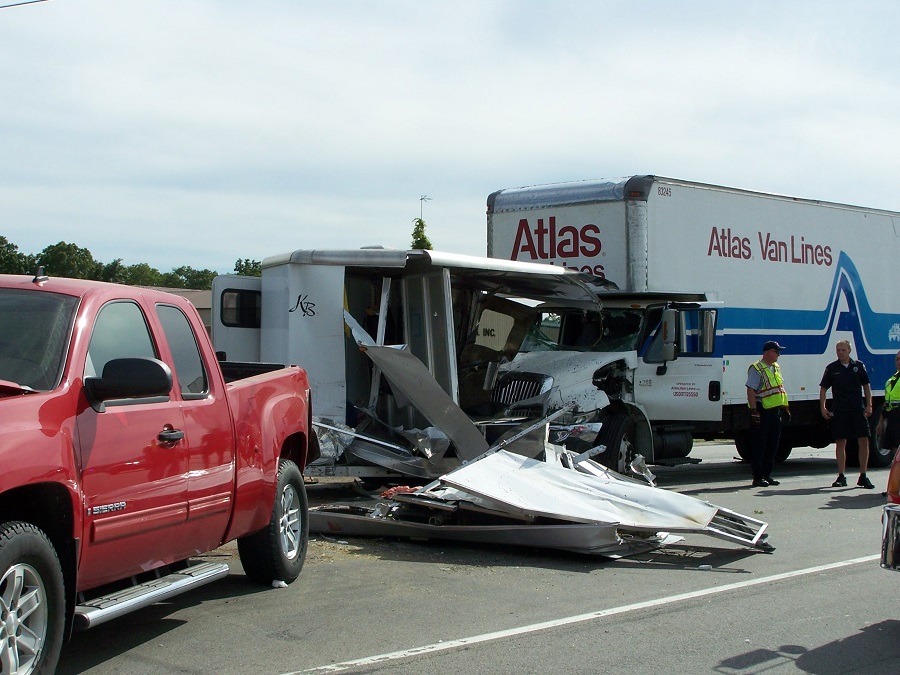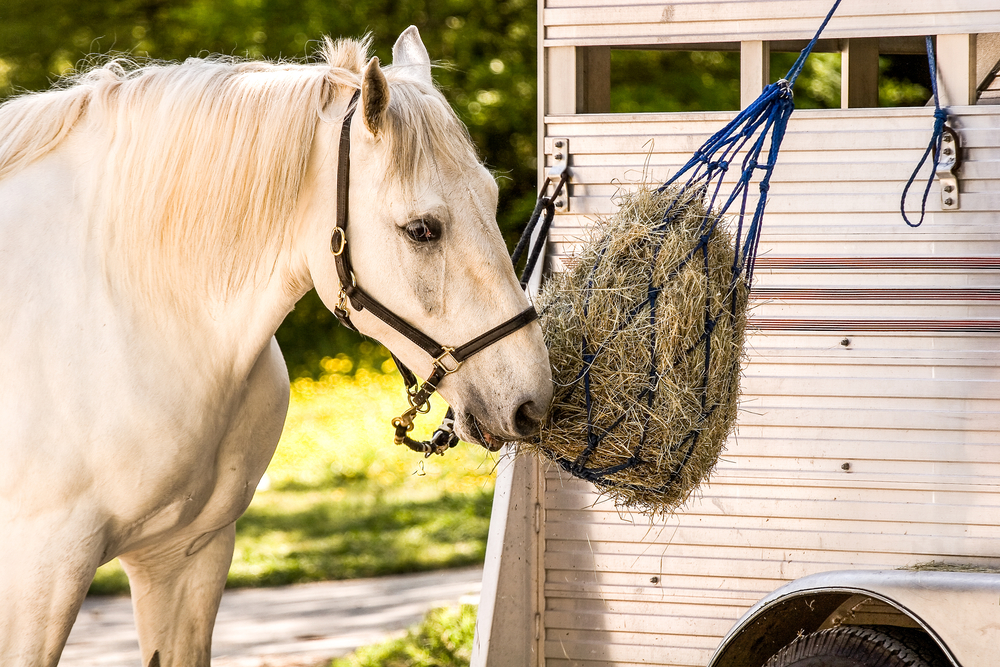Tuesdays with Tony
You may have heard the story of the horse we named “Highway” who was found on I-75 on Friday and treated here at Springhill Equine Veterinary Clinic for his wounds. It turns out that he fell out of a moving horse trailer. So, I thought now might be a good opportunity to tell you all my Tony Trailer Tips!
Check Your Trailer
The most important thing, whether you are planning on hauling a horse around the country or around the corner, is to make sure your trailer is in good working order. Most trailers are made out of a combination of metal, wood, or fiberglass. The problem is, metal can rust, wood can rot, and fiberglass can crack. Start with the floorboards, making sure there are no soft or weak spots where a horse’s foot could fall through. If you have floor mats, remember to pull them up regularly and check underneath.
Next, be sure to check your door latches and hinges for any pieces that may be rusty, loose, or missing. As a cat who works at a vet clinic, I see way too many lacerations sustained on horse trailers. So, for my sake, please also check the interior of your trailer for nails or other sharp things that your horse could find to hurt himself on.
Check your trailer brakes, as well as brake lights and turn signals before heading out. There could easily be a short in the wiring even if you just drove it yesterday. I see so many trailers come through the clinic with the lights not working. Why would you put the thing you care about the most in a trailer with no brake lights or turn signals? That’s just begging to get rear-ended, and that never ends well for the horse.

It’s always good to do a “circle of safety” just before driving away with your trailer. A circle of safety is where starting at the driver’s side door, you walk ALL the way around your truck + trailer until you return to that door, looking for anything amiss. Make sure you kick every tire, and make sure your spare is still inflated. Under-inflated tires are the number 1 reason for blowouts, and blowouts are the number 1 reason for trailers flipping over.
Don’t tie your horse
This is a controversial Tony Tip, but hear me out. If (God forbid) you were in a trailer accident, and the trailer flipped or rolled, would you want your horse to be attached to the trailer? What if the trailer landed sideways or upside down? Also, having your horse’s head attached to the trailer and unable to move freely in the event of an accident could place extreme torque on your horse’s neck. We don’t want that.
Another reason our docs recommend NOT tying your horse is to prevent shipping fever. Especially on a long trip, leaving a horse’s head untied allows them to lower their head to the ground to clear their nostrils of dirt, mucus, and germs. Tying your horse prevents this very normal behavior, resulting in several snotty, sick horses at the end of a long haul.
Leaving your horse untied in the trailer can’t 100% prevent “shipping fever,” because you still have the unfortunate combination of new bacteria combined with the stress of hauling. However, in our docs’ experience, it can greatly reduce the incidence.
If you must tie your horse (i.e. to prevent him from turning around in the trailer, or to stop him from bothering another horse you are hauling) always use a breakaway halter. Breakaway halters, as the name implies, are made of something that will break if enough pressure is applied. They are usually leather or have a strip of leather over the poll. The idea is that this leather strap will break before the horse’s neck in the event of an accident.
A word about loading
You seasoned equestrians will already know this, but consider it a refresher! You always want to load the heavier horse on the driver’s side. If you’re only hauling one horse, make sure he is on this “high side” of the trailer. The reason behind this has to do with the pitch, or slant, of the road. When paved, the road is actually taller in the middle than at the shoulder. If you were to put the heavier load on the passenger side, the combination of the pitch of the road and the uneven weight would cause the trailer to pull hard to the right.
Think safety first
When driving your trailer, practice defensive driving at all times. It seems today fewer and fewer people on the road understand trailer safety, so you have to be extra cautious. Give yourself more than enough stopping distance. Take turns slow and wide. Leave extra time and don’t speed. And my personal favorite: don’t pull in anywhere you aren’t sure you can get your trailer out of!
At rest stops, check your horse to make sure everything is hunky-dory. Remember to offer your horse water when you stop, to prevent colic on a long trip.
I could keep giving you Tony Trailer Tips all day, but a cat’s gotta nap. I think the most important thing to remember at all times is that you have some very precious cargo onboard! No one would ever choose to let their horse get injured rather than have their trailer fixed, right? Right?
Safe Travels to you and your horses!
~ Tony
P.S. After you subscribe to my blog, which gets it to you by email a day earlier than the Facebook masses get it, why don’t you try out the Springhill Equine podcast? It’s called Straight from the Horse Doctor’s Mouth, and each episode is packed with way more info than I could ever stay awake long enough to write down for you in my amazing blog. It’s free, and you can listen to it right from your phone while you’re doing human stuff. Trust me, it will change your life. Well, probably.

[jetpack_subscription_form title="Subscribe to Whinny's Wisdoms"]
Tuesdays with Tony is the official blog of Tony the Clinic Cat at Springhill Equine Veterinary Clinic in Newberry, Florida. If you liked this blog, please subscribe below, and share it with your friends on social media! For more information, please call us at (352) 472-1620, visit our website at SpringhillEquine.com, or follow us on Facebook!
